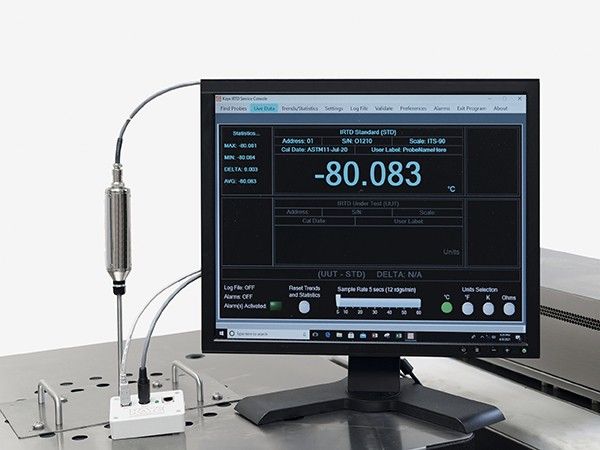In the realm of scientific and industrial measurements, accuracy and precision are paramount. The cornerstone of reliable temperature measurement lies in temperature reference standard. These standards serve as the bedrock against which all measurements are calibrated, ensuring consistency and reliability across various applications.
Understanding Temperature Reference Standards
Temperature reference standards are devices or materials with accurately known and stable temperatures. They provide a benchmark against which temperature-measuring instruments are calibrated. This calibration ensures that instruments such as thermometers, thermal cameras, and temperature sensors deliver accurate readings, critical in industries ranging from pharmaceuticals to aerospace.
Types of Temperature Reference Standards
- Fixed-Point Cells: These standards use the precise temperature at which a pure material undergoes a phase transition, such as melting or freezing, as a reference. Examples include the melting points of pure metals like gallium, indium, and zinc.
- Black-body Radiators: These are devices that emit thermal radiation with a known spectral distribution. Blackbody radiators are used in industries where precise infrared temperature measurements are required, such as in metallurgy and materials science.
- Thermocouples and Resistance Thermometers: These devices use known electrical properties of materials to measure temperature accurately. They are widely used due to their versatility and can be calibrated against more stable standards.
Importance of Calibration
Calibration is the process of comparing a device’s measurement accuracy against a known standard. For temperature reference standards, calibration ensures that instruments provide consistent and reliable readings over time. This process is crucial in industries where even a slight deviation in temperature measurement can lead to significant consequences, such as in food processing or climate-controlled environments.
Applications Across Industries
Temperature reference standards find applications in diverse industries:
- Healthcare: Ensuring accurate temperature measurement in medical devices such as thermometers and incubators is critical for patient safety and effective treatment.
- Manufacturing: In industries like semiconductor manufacturing, precise temperature control is essential for ensuring product quality and process efficiency.
- Research and Development: Laboratories rely on temperature standards to validate experimental conditions and ensure reproducibility in scientific research.
- Energy: In energy production and distribution, accurate temperature measurement is crucial for optimizing efficiency and maintaining equipment reliability.
Advancements in Technology
Advancements in temperature reference standards have paralleled technological progress:
- Digital Standards: Modern standards incorporate digital technology for more precise control and easier calibration processes.
- Portable Standards: Portable temperature reference standards allow for on-site calibration, reducing downtime and logistical complexities.
- Traceability: Many standards now adhere to international standards of traceability, ensuring that measurements can be reliably compared across different locations and laboratories worldwide.
Challenges and Innovations
Despite their importance, temperature reference standards face challenges:
- Environmental Factors: External factors such as ambient temperature can influence measurements, necessitating careful calibration and monitoring.
- Cost and Accessibility: High-precision standards can be expensive, limiting access to smaller laboratories and industries.
To address these challenges, ongoing innovations focus on enhancing stability, reducing size, and improving affordability. For instance, research into new materials with predictable phase transitions or improved thermometric properties aims to expand the range and accessibility of temperature reference standards.
Future Directions in Temperature Reference Standards
Looking ahead, the field of temperature reference standards is poised for further advancements and innovations. As industries demand ever-higher levels of accuracy and reliability in temperature measurement, researchers and engineers are exploring several promising avenues:
1. Nanoscale Standards
Advances in nanotechnology offer the potential for creating temperature reference standards at the nanoscale level. These standards could provide unprecedented precision, particularly useful in emerging fields such as nanoelectronics and biotechnology where minute temperature variations can have significant effects.
2. Integration with IoT and AI
The integration of temperature reference standards with Internet of Things (IoT) technologies and artificial intelligence (AI) holds promise for real-time monitoring and adaptive calibration. Smart sensors equipped with AI algorithms can continuously adjust calibration parameters based on environmental changes, ensuring sustained accuracy without human intervention.
3. Green and Sustainable Standards
There is growing emphasis on developing temperature reference standards that are environmentally friendly and sustainable. This includes reducing the use of hazardous materials in their construction and improving energy efficiency during operation. Such initiatives align with global efforts towards sustainability and responsible manufacturing practices.
4. Global Standardization and Interoperability
Ensuring global standardization and interoperability of temperature reference standards remains a priority. International cooperation and adherence to recognized metrological standards facilitate seamless comparison of measurements across borders and industries. This is crucial for maintaining consistency in global supply chains and regulatory compliance.
5. Multi-Functional Standards
Future standards may encompass multi-functional capabilities beyond temperature measurement alone. Integration with other sensing modalities such as pressure or humidity could create versatile measurement platforms capable of monitoring multiple parameters simultaneously. This convergence of technologies enhances efficiency and reduces overall instrumentation costs.
6. Education and Training
Investment in education and training programs is essential to ensure proficiency in the calibration and use of temperature reference standards. Empowering technicians and engineers with the knowledge and skills required for accurate measurement practices enhances operational efficiency and promotes innovation within industries reliant on precise temperature control.
Conclusion
Temperature reference standard are indispensable tools in modern measurement science. From ensuring food safety to advancing cutting-edge research, these standards underpin a vast array of industries and applications. As technology evolves, so too will the capabilities and accessibility of these standards, driving forward precision and reliability in temperature measurement worldwide. Whether in a laboratory or on a production line, the quest for accurate temperature measurement begins with a solid foundation in temperature reference standards.
